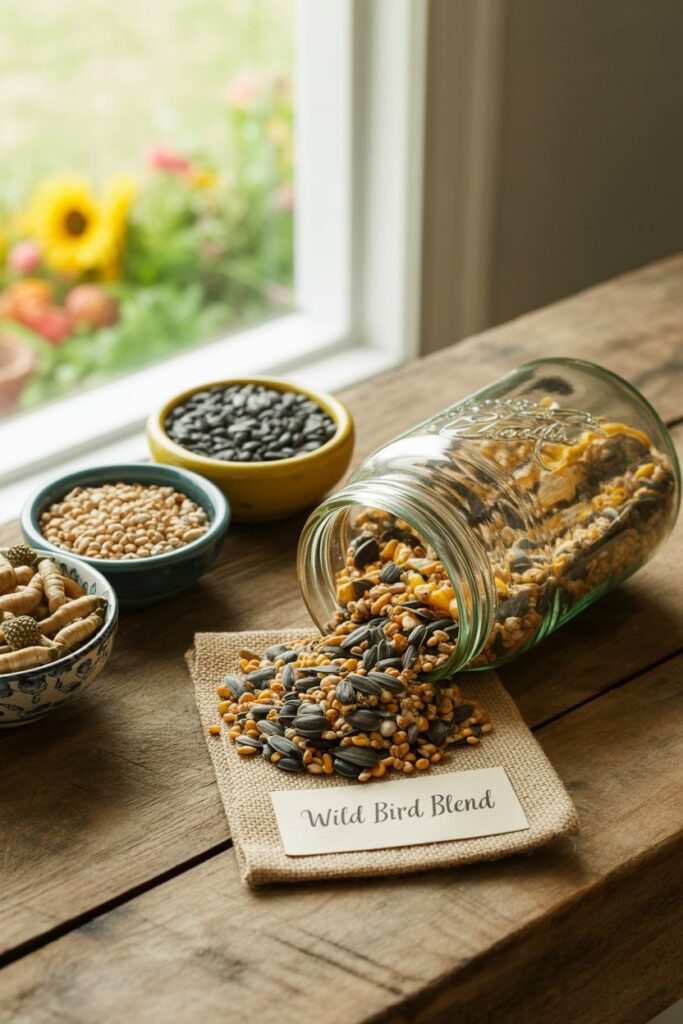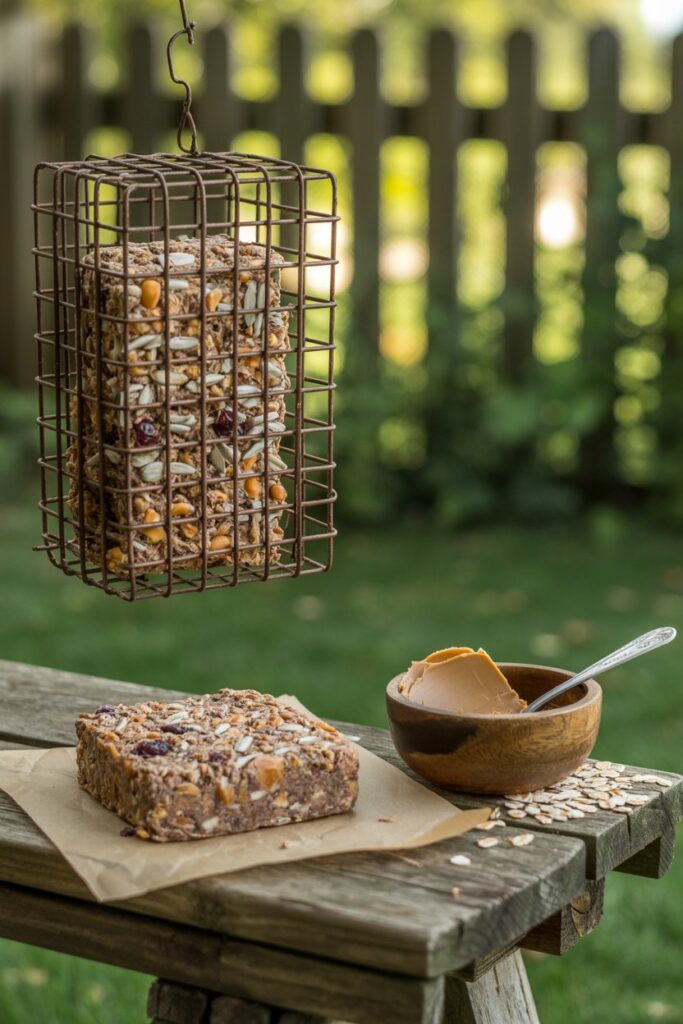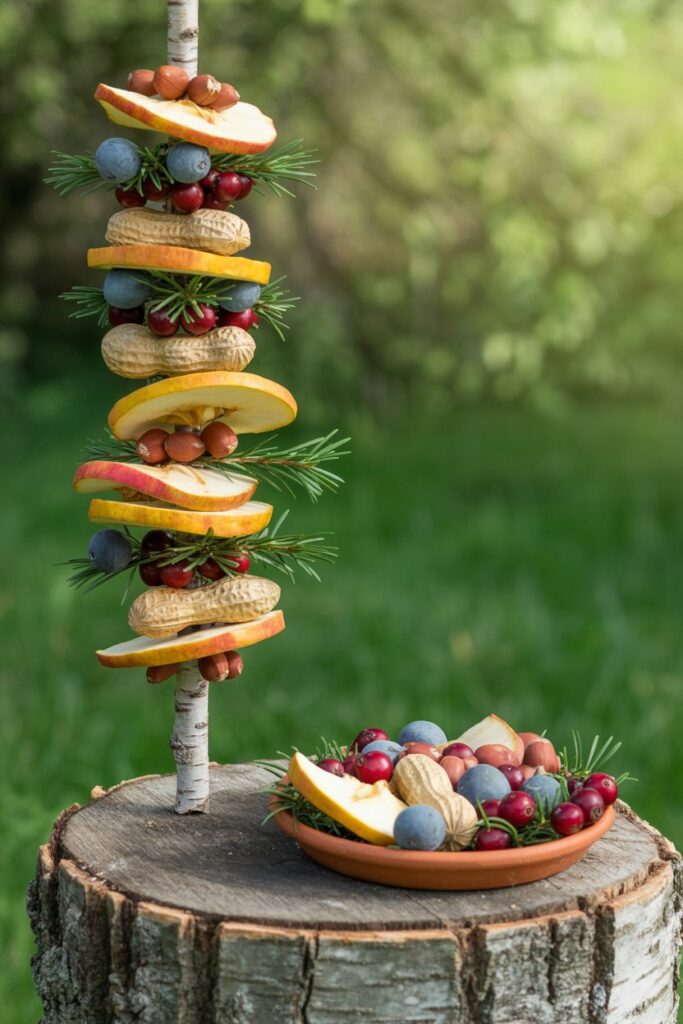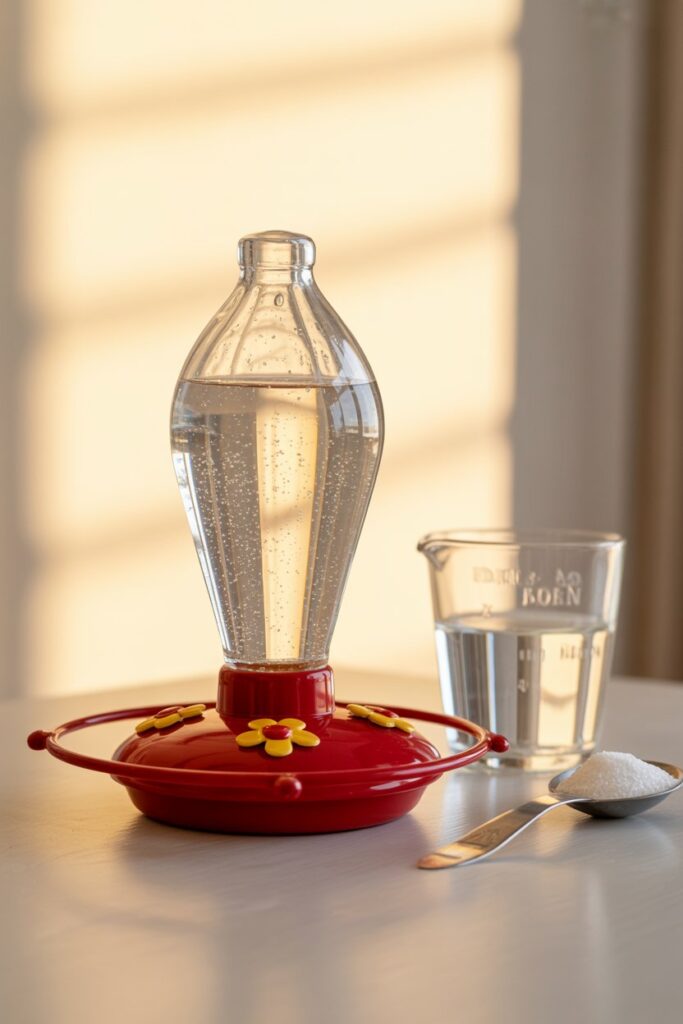Knowing about pet-safe and toxic plants is vital for responsible pet owners. It helps keep your furry friends happy and healthy.
Some plants can brighten your home or garden, but others may pose serious health risks if chewed or ingested. Many common plants seem harmless but can cause issues, from mild stomach upset to severe poisoning.
In this blog, we’ll help you spot which plants are safe for pets and which ones to avoid. You’ll also find practical tips for a pet-friendly space that still looks great. With the right knowledge, you can enjoy beautiful greenery without risking your beloved companions’ health.
Seed Mix Basics

Creating a basic bird seed mix is easy. Start with sunflower seeds since many birds enjoy them. Then, mix in millet and cracked corn. This attracts a wider variety of birds. These ingredients are cheap and easy to find.
When making homemade bird food, think about what different birds need. For example, adding peanuts attracts woodpeckers and jays. Always use unsalted peanuts to keep the birds safe.
You can also add dried fruits like raisins or cranberries. These boost nutrition and draw in fruit-eating birds. Just ensure the fruits have no added sugars or preservatives.
Discover top bird food essentials available now on Amazon
Suet Cakes

Suet cakes are an excellent way to feed birds, especially in winter when food is hard to find. They offer high-energy nutrition that helps birds stay warm and healthy. Making them at home lets you control the ingredients.
To create homemade bird food, melt beef fat or lard. Then mix in seeds, nuts, and dried fruit. Pour the mixture into molds and let it cool. Once solid, hang the cakes outside for the birds to enjoy.
Suet cakes can attract many birds, like woodpeckers, chickadees, and nuthatches. By offering this nutritious food, you support local wildlife and get a chance to see different bird species up close.
Check these beginner-friendly bird feeding picks on Amazon today
Fruit and Nut Treats

Making homemade bird food is easy and fun. Start by mixing chopped fruits like apples and berries with various nuts. This mix is nutritious and irresistible to many fruit-eating birds.
Another great recipe is blending dried fruits with seeds and a bit of honey. This sticky mix can be shaped or spread on tree bark. It attracts birds with its sweet and nutritious content.
You can also make a bird-friendly treat by mixing oats, peanut butter, and dried fruits. Roll the mixture into small balls and place them in feeding areas. Birds will enjoy this easy, high-energy snack.
Nectar for Hummingbirds

To make nectar for hummingbirds, mix one part sugar with four parts water. Boil the mix, then let it cool. After that, fill your feeder. Don’t use red dye; it can harm the birds.
Place your feeder in a shady area. This keeps the nectar fresh longer. Clean the feeder often to stop mold and bacteria, which can hurt hummingbirds. Refill it with fresh nectar every few days, especially when it’s hot.
Hummingbirds like bright colors, so pick a feeder with red parts. You can also plant flowers like bee balm and trumpet vine to attract them. A steady source of nectar will help hummingbirds visit your garden more often.
Shop the best bird food supplies directly from Amazon
Conclusion
Making homemade bird food is fun and rewarding. It helps you and your feathered friends. By following the steps in this guide, you can create tasty treats.
These will attract many birds to your backyard. Also, keep your bird feeders clean. Refill them often to ensure your visitors stay healthy and happy.
What Ingredients Are Best for Homemade Bird Food?
The best homemade bird food includes a mix of seeds such as sunflower, millet, and cracked corn. You can also add nuts, dried fruits, and suet for extra nutrition.
Avoid salted, flavored, or sugared ingredients, as these can harm birds. By choosing the right ingredients for the bird species in your area, you can attract colorful visitors.
This supports their health and gives you great birdwatching opportunities.
How Do I Make Suet Cakes for Birds?
Melt beef fat or lard. Mix in seeds, chopped nuts, and dried fruits. Pour the mix into molds. Let it cool and harden. Then, hang the suet cakes in your backyard. Suet is high in energy and great for winter.
Birds like woodpeckers, chickadees, and nuthatches enjoy suet. Making it yourself lets you control the ingredients and avoid harmful additives in some store-bought options.
Is It Safe to Give Birds Fruits and Nuts?
Yes, many birds eat fruits and nuts. Apples, berries, and unsalted peanuts are great choices. Always wash fruits first. Avoid giving anything with added sugar, salt, or preservatives.
These nutrient-rich foods add variety and attract birds that prefer fruit. Just remember to offer them in moderation with seeds or other staple foods.
How Can I Make Nectar for Hummingbirds?
Mix one part white sugar with four parts water. Boil the mixture until the sugar dissolves, then let it cool. Fill your feeder with the nectar and clean it often to prevent mold.
Don’t use red dye, as it can harm hummingbirds. Placing feeders near flowers like bee balm and trumpet vine can attract more hummingbirds. Regular feeding will keep them returning.
How Often Should I Clean My Bird Feeders?
Clean bird feeders every one to two weeks, or more often during hot or wet weather. Use warm, soapy water and rinse well.
This helps prevent bacteria and mold. Regular cleaning keeps your bird visitors healthy and stops diseases from spreading among them.
